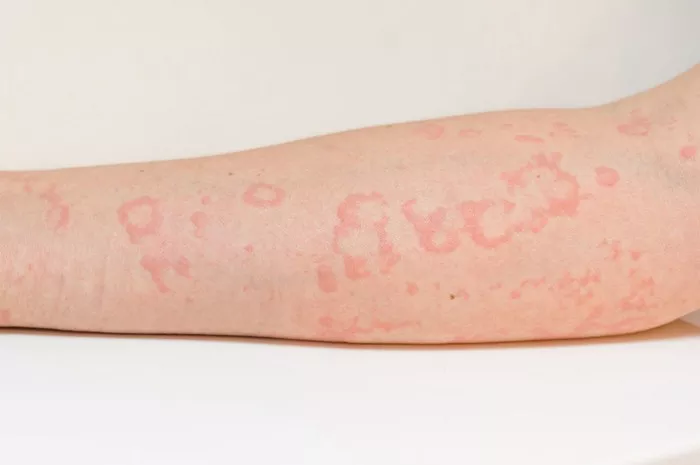Chronic urticaria and angioedema are two common dermatological conditions characterized by the sudden onset of hives and swelling. While they may appear similar, they differ in their duration and underlying causes. Understanding the differences between these conditions is crucial for accurate diagnosis and effective management.
What is Chronic Urticaria?
Chronic urticaria, also known as chronic hives, is a skin condition characterized by the recurrent appearance of wheals or hives. These hives are typically red, raised, and intensely itchy welts that vary in size and shape. Chronic urticaria is defined by the persistence of symptoms for more than six weeks, with episodes often recurring for months or even years.
Understanding Angioedema
Angioedema is a related condition that involves swelling in the deeper layers of the skin, often affecting areas such as the eyes, lips, tongue, throat, hands, and feet. Unlike urticaria, which primarily affects the surface of the skin, angioedema involves swelling beneath the skin’s surface. This swelling can be more pronounced and may cause discomfort or pain, particularly when it affects sensitive areas such as the throat.
Causes of Chronic Urticaria and Angioedema
The exact causes of chronic urticaria and angioedema can be challenging to determine, as they often result from complex interactions between genetic, environmental, and immune factors. However, several triggers and underlying conditions have been identified:
1. Autoimmune Disorders: In some cases, chronic urticaria may be associated with autoimmune disorders, where the immune system mistakenly targets healthy tissues, leading to inflammation and the release of histamine.
2. Allergic Reactions: Allergens such as certain foods, medications, insect bites, or environmental factors can trigger urticaria or angioedema in susceptible individuals. These reactions typically occur shortly after exposure to the allergen.
3. Chronic Infections: Persistent infections, such as viral or bacterial infections, may contribute to the development of chronic urticaria or angioedema by triggering immune responses that lead to inflammation and swelling.
4. Physical Stimuli: Certain physical stimuli, including pressure, temperature changes, sunlight (solar urticaria), or friction, can induce urticaria or angioedema in some individuals. This subtype of urticaria is known as physical or inducible urticaria.
5. Idiopathic Causes: In many cases, the exact cause of chronic urticaria or angioedema remains unknown, leading to a diagnosis of idiopathic urticaria or angioedema. Despite extensive evaluation, no specific trigger or underlying condition can be identified in these cases.
Symptoms and Diagnosis
The primary symptom of both chronic urticaria and angioedema is the sudden onset of welts or swelling, often accompanied by itching, burning, or stinging sensations. The appearance of hives can vary widely, ranging from small, discrete bumps to large, irregularly shaped patches. Angioedema typically involves deeper swelling that affects areas such as the lips, eyes, or throat, leading to a more pronounced and potentially serious reaction.
Diagnosing chronic urticaria and angioedema involves a thorough medical history, physical examination, and sometimes additional tests to identify potential triggers or underlying conditions. Blood tests, skin prick tests, and allergy testing may be performed to rule out specific allergens or underlying diseases.
SEE ALSO:What Is Exercise-Induced Urticaria
Management and Treatment Options
The management of chronic urticaria and angioedema focuses on controlling symptoms, identifying triggers, and minimizing the frequency and severity of episodes. Treatment strategies may include:
1. Antihistamines: Oral antihistamines are the first-line treatment for both conditions and help relieve itching and reduce the formation of hives by blocking the effects of histamine.
2. Corticosteroids: In severe cases or during acute flare-ups, corticosteroids may be prescribed to reduce inflammation and swelling. However, long-term use of corticosteroids is generally discouraged due to potential side effects.
3. Avoidance of Triggers: Identifying and avoiding triggers, such as certain foods, medications, or environmental factors, can help prevent future episodes of urticaria or angioedema.
4. Immunomodulatory Therapies: For cases of chronic urticaria resistant to conventional treatment, immunomodulatory therapies such as omalizumab may be considered to target specific immune pathways involved in the condition.
5. Emergency Care: In cases of severe angioedema involving the throat or difficulty breathing, emergency medical attention is essential to prevent complications and ensure patient safety.
Conclusion
Chronic urticaria and angioedema are debilitating conditions that can significantly impact patients’ quality of life. While they share similarities in their clinical presentation, understanding the differences in their underlying causes is essential for accurate diagnosis and effective management. By identifying triggers, implementing appropriate treatment strategies, and working closely with healthcare providers, individuals with chronic urticaria and angioedema can better control their symptoms and improve their overall well-being.
Related Topics:


























